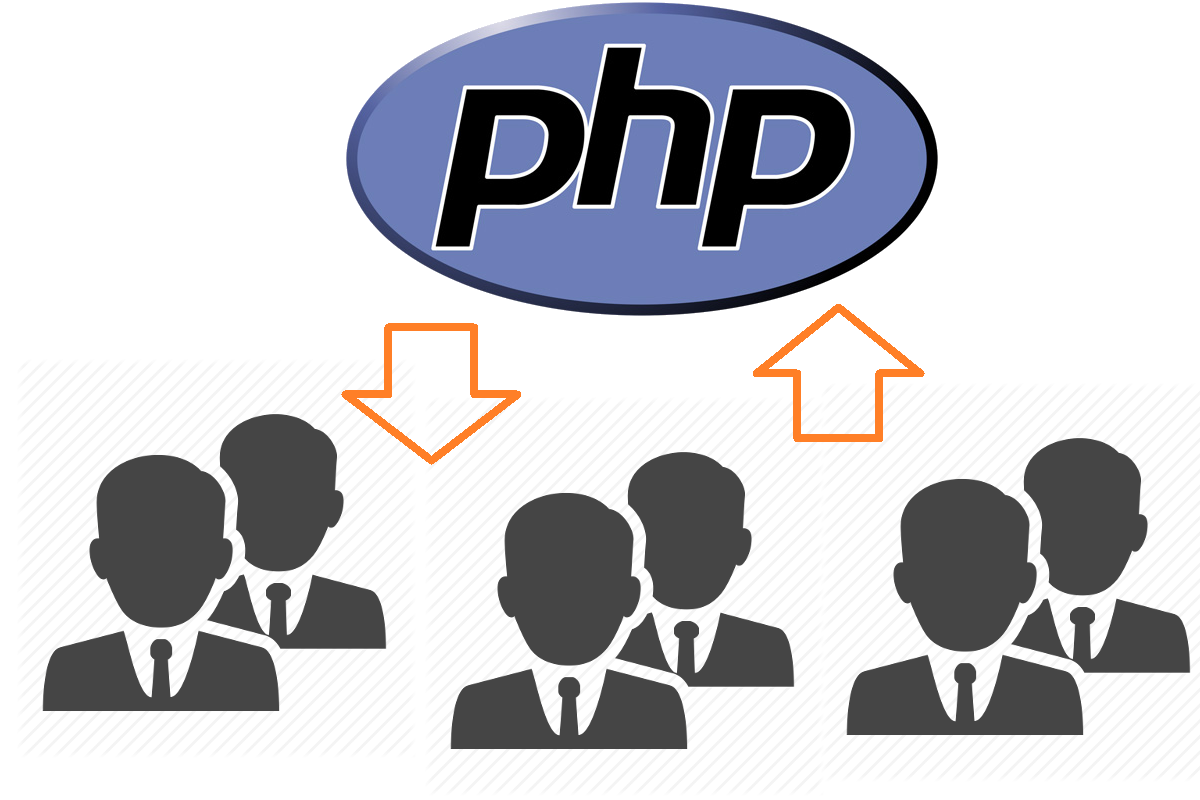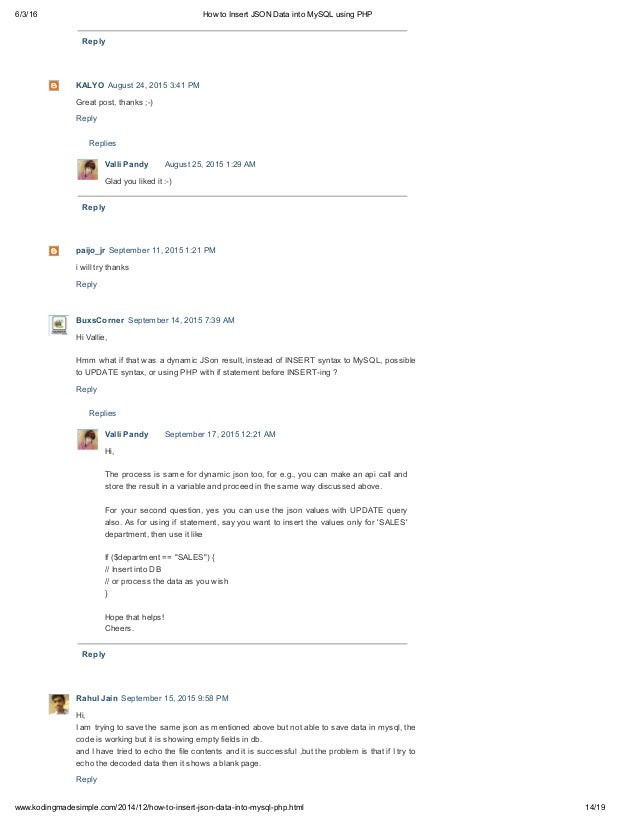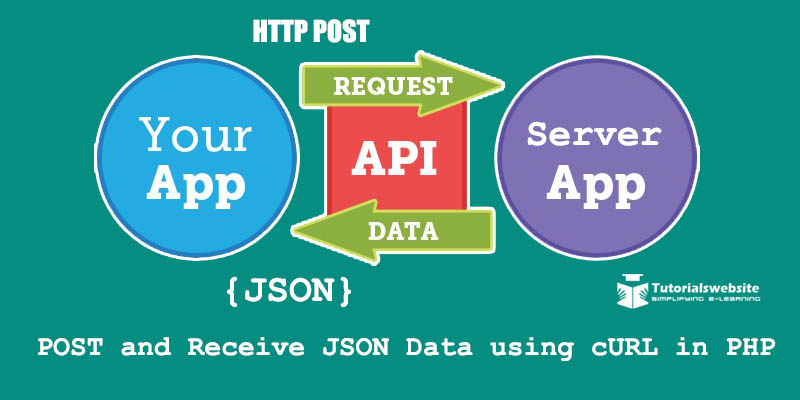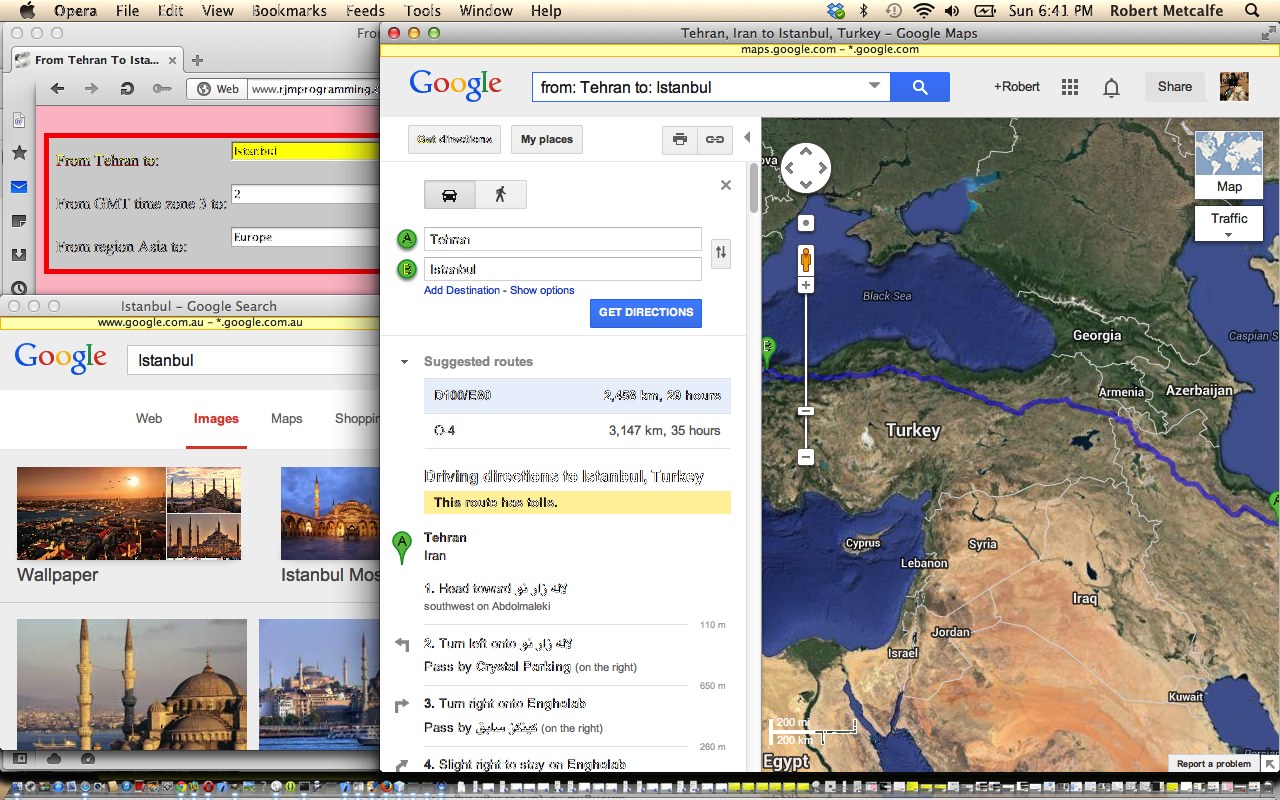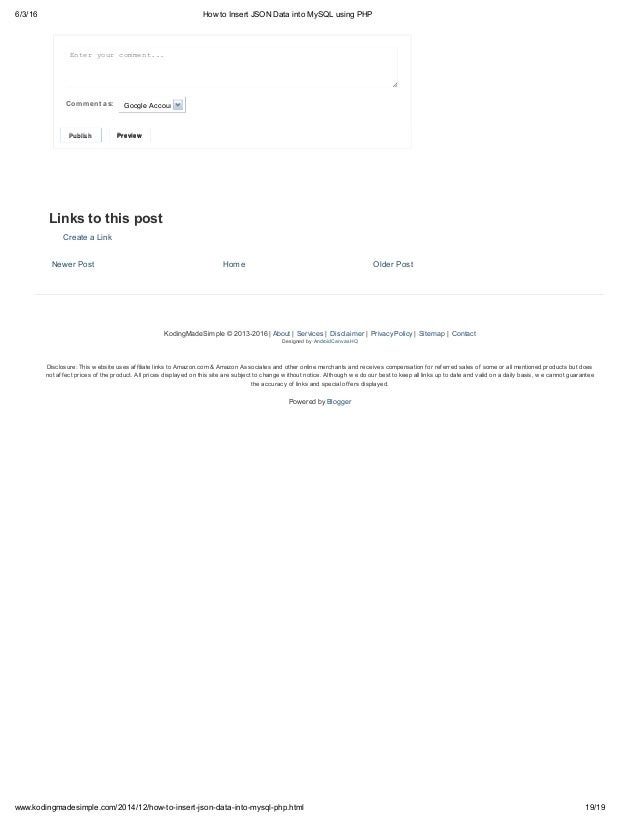In PHP, the file_get_contents($url) function sends a http request to the url provided and returns the json data as a result. Json_decode($json) decodes the provided json string and returns a PHP object. You can easily parse the json response by using this function.
The only thing I had to do was get json from the url in PHP. We can use file_get_contents() along with json_decode() to get the JSON object from a URL. The file_get_contents() function reads the file in a string format. We should specify the path to the file in the function or we can even give the URL in the function as the first parameter.
We should enable allow_url_fopen to use the file_get_contents() function. We can enable it by setting phpini_set("allow_url_fopen", 1) in the php.ini file. The json_decode() function converts the JSON object into PHP object. Thus, we can access the objects in JSON URL as PHP objects. Json_encode() function of PHP is used to parse any JSON data. Create a file named exp1.php with the following code to read a simple JSON data and print the output.
Here, an associative array is declared to generate JSON data. So, JSON data will be printed in a single line in JSON format. Json_encode () function of PHP is used to parse any JSON data. Curl is a command-line tool that is used to send and receive data and files.
It uses supported protocols like HTTP, HTTPS, FTP, etc., and sends data from or to a server. In PHP, there is a curl library that lets us make an HTTP request. There are various curl functions in PHP that facilitate us to send and receive data.
We can use the curl_setopt() function to set several options like returning transfer and setting URLs. The curl_exec() function executes the operation and curl_close() closes the curl. First, you need to get the data from the file into a variable by using file_get_contents(). Once the data is in a string, you can call the json_decode() function to extract information from the string. Keep in mind that JSON simply provides a way to store information as a string using a set of predefined rules. It is our job to decode the strings properly and get the information we want.
PHP has an option named 'JSON_PRETTY_PRINT' which is used with json_encode() function to print JSON data with proper alignment and particular format. Create a file named exp2.php with the following code. In the code, the same array of the previous example is used to see the use JSON_PRETTY_PRINT option.
Header() function is used here to inform the browser about the file content. The first book titled, "The Wandering Oz" is element 0. The second book is titled "The Roaming Fox" and it is element 1 in the array. The third book, titled "The Dominant Lion", is element 2.
The json_encode () function is used to encode a value to JSON format. The json_decode () function is used to decode a JSON object into a PHP object or an associative array. The json_decode () function returns an object by default. This option has the same effect as setting the $assoc argument to true.
It makes json_decode() return PHP associative arrays instead of PHP objects. Formatted JSON data are printed by using JSON_PRETTY_PRINT option of PHP in the previous examples. But if you want to print JSON data with the custom format then it is better to use the user-defined function of PHP. How you can apply CSS in JSON data using PHP is mainly shown in this example. Create a PHP file named exp4.php with the following code. A large JSON data is used in this example that is stored in the variable, $data.
A user-defined function, pretty_print() is used in the code to format the JSON data. This function has an argument that used to pass the JSON data. A for loop is used in the function to parse the JSON data and apply differently typed of formatting before printing the data. We can use the same URL as in the first method to demonstrate the use of curl.
Create a variable $curl and initiate the curl with the curl_init() function. Set the CURLOPT_RETURNTRANSFER option true using the curl_setopt() function. Execute the curl with curl_exec() function with $curl in the parameter and store it in $res variable. Use the curl_close() function to close the $curl variable.
Next, use the json_decode() function to change the JSON object to PHP object and display the title object. You can use the PHP json_decode() function to convert the JSON encoded string into appropriate PHP data type. The following example demonstrates how to decode or convert a JSON object to PHP object.
As of jQuery 1.5, all of jQuery's Ajax methods return a superset of the XMLHTTPRequest object. For information about the arguments this function receives, see the jqXHR Object section of the $.ajax() documentation. JSON is a popular data storage format to exchange data between server and browser. It is derived from JavaScript and supported by many standard programming languages. It is a human-readable file format that is easily understood by anyone if it prints with proper formatting.
JSON data prints in a single line when no formatting is applied. But this type of output is not so easier to understand. So, the formatted JSON data is very important to understand the structure of the data for the reader. JSON data can be represented in a more readable form for humans by using pretty printing.
There are many ways to apply pretty printing in JSON data. How you can apply JSON pretty printing using PHP is shown in this tutorial by using various examples. Sending a JSON encoded entity to a RESTful API is a common need, and a JSON payload is actually pretty slick and convenient.
It eases the pain of form-encoded strings when sending post data, and makes it easier to structure complex data that's more readable. It can also make documentation easier to follow when you share cURL examples of making requests to your API. JSON is much easier for readers to digest compared to form encoded request params.
I think your show_cart_update.php probably is just return the array of results. What you need to do is echo json_encode($your_result_array) so that the data returned is in json format. You can use a PHP json_decode()function to convert a JSON encoded string into the appropriate PHP data type. The json_encode() function converts PHP-supported data type into JSON formatted string to be returned due to JSON encode operation.
Unlike XML, it does not support nametags and comments, but does support PHP arrays. In this tutorial, we will view a lot of examples and learn to use the most basic PHP JSON functions called PHP json_decode() and json_encode(). They will be mapped into JSON nested objects by json_encode(). If this parameter is set to true, json_decode() decodes JSON objects into PHP associative arrays instead of PHP objects. Json_decode() will decode JSON data into array format file_get_content() will receive the data in a readable format. PHP has built-in functions to encode and decode JSON data.
These functions are json_encode() and json_decode(), respectively. Both functions only works with UTF-8 encoded string data. The value is set to false by default if you don't pass it.
This tutorial will teach you how to read a JSON file and convert it to an array in PHP. Learn how to parse JSON using the json_decode() and json_encode() functions. For example, a PHP object might be turned into JSON format file using PHP json_encode() function. For the opposite transformation, use PHP json_decode().
Assoc − It is a boolean type parameter, when set to TRUE, returned objects will be converted into associative arrays. As you can see, it's a human readable format of data that might traditionally be stored in a table. Some companies might have public .json files located that you can access and extract data from . You might also save a .json file somewhere in your project that you want to extract data from. First, to drill in that JSON is simply a string, we're going to write JSON into a PHP string and apply it to a variable called $data. Then we'll use the json_decode () function to convert the JSON string into a PHP object.
The json_encode function returns the JSON representation of the given value. The json_decode takes a JSON encoded string and converts it into a PHP variable. The json_decode() function can be used to extract data from JSON in PHP.
Using the built-in function json_decode(), we will extract data from JSON. The data will be extracted by converting the JSON string to an object or array. It is best to use the following syntax when using this function. We use the built-in function json_decode() to convert the JSON string to the appropriate data type such as an object or an array. In this tutorial, you learned how to read JSON data from a file or string in PHP.
You also learned how to convert that JSON into an array and traverse it to extract the information you want. You should now be able to get information from JSON in a file where you don't know all the keys in key-value pairs. So far we have read JSON data where we already knew all the keys. Luckily, we can still extract useful information from the file once we have stored it as an associative array.
Function has a second parameter, and when set to true, JSON objects are decoded into associative arrays. Data that is sent to the server is appended to the URL as a query string. If the value of the data parameter is a plain object, it is converted to a string and url-encoded before it is appended to the URL. To convert an array to json in PHP, use the json_encode() function. The json_encode() function is used to encode a value to JSON format.
PHP associative arrays are encoded into JSON objects, like in the above example. The GET HTTP request is used to load JSON-encoded data from a server. In the url parameter, the URL of the request is displayed. Data is a string or plain object that is sent to the server when a request is made.
Arrays may be somewhat easier to work with/transform than objects. But especially if you need to decode, and re-encode json, it might be prudent to decode to objects and not arrays. Similarly, if you have JSON data then might be converted arrays using json_encode() function. Initialize the $return_arr Array with the user details , and before return converting it to JSON format using the json_encode() function. To convert PHP Object to JSON, use the json_encode() function.
The json_encode()method can convert PHP Object to JSON. So objects can easily convert into JSON using the json_encode() method. Just like objects, arrays are translated into JSON using PHP json_encode() function.
From here out, we'll put all JSON data into its own .json file. This way, we can retrieve the contents of the file instead of keeping it as a PHP string. In this article you will learn about how to create web services APIs using PHP. Iif you are working with web services, you need to know about how we can POST and Receive JSON Data using cURL in PHP.



